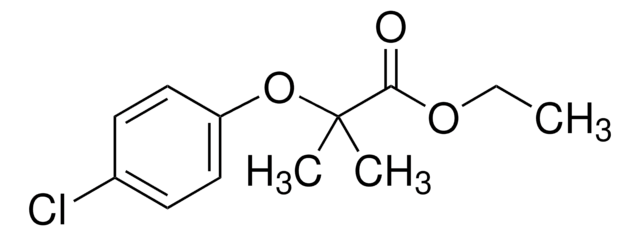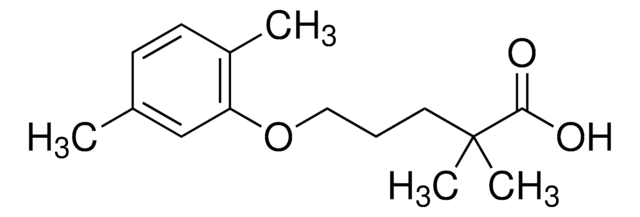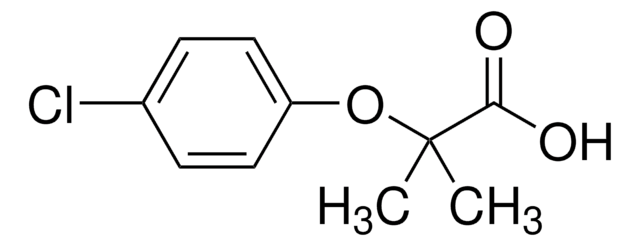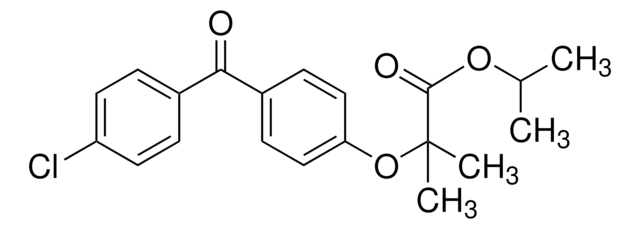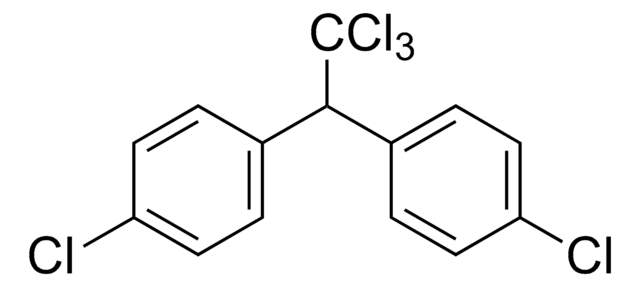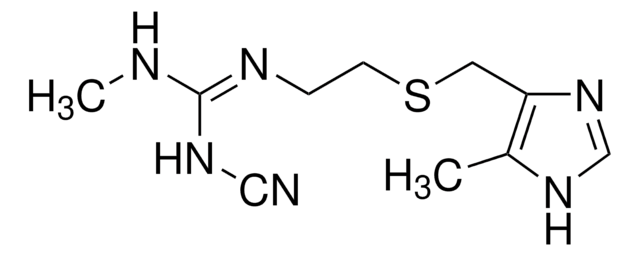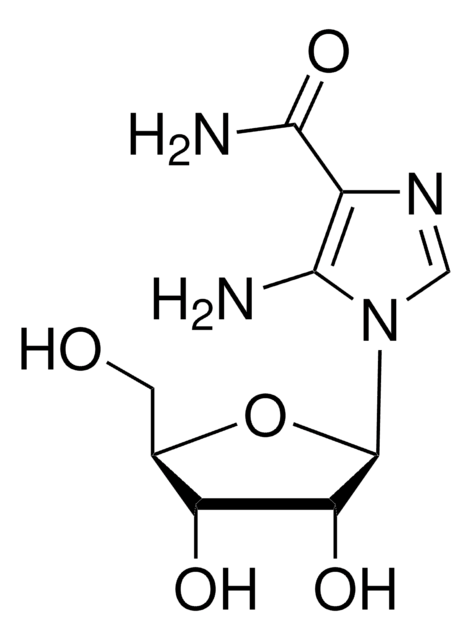C6643
Clofibrate
liquid
Synonym(s):
2-(4-Chlorophenoxy)-2-methylpropionic acid ethyl ester, Ethyl 2-(4-chlorophenoxy)-2-methylpropionate, Ethyl 2-(4-chlorophenoxy)isobutyrate
About This Item
Recommended Products
form
liquid
Quality Level
color
clear colorless
density
1.14 g/mL at 25 °C (lit.)
originator
Wyeth
storage temp.
2-8°C
SMILES string
CCOC(=O)C(C)(C)Oc1ccc(Cl)cc1
InChI
1S/C12H15ClO3/c1-4-15-11(14)12(2,3)16-10-7-5-9(13)6-8-10/h5-8H,4H2,1-3H3
InChI key
KNHUKKLJHYUCFP-UHFFFAOYSA-N
Gene Information
human ... PPARA(5465)
mouse ... Ppara(19013)
Looking for similar products? Visit Product Comparison Guide
Application
- as a quinolinate phosphoribosyltransferase (QPRT) agonist to study its effects on hepatitis C virus (HCV) infection
- as peroxisome proliferated activated receptor (PPAR) agonist to study its effects on autophagy in rat liver cells
- as a hepatotoxicant to study its effects on gene expression in primary rat hepatocytes
Biochem/physiol Actions
Features and Benefits
Packaging
Signal Word
Danger
Hazard Statements
Precautionary Statements
Hazard Classifications
Acute Tox. 4 Oral - Eye Dam. 1 - Skin Irrit. 2 - STOT SE 3
Target Organs
Respiratory system
Storage Class Code
10 - Combustible liquids
WGK
WGK 3
Flash Point(F)
235.4 °F - closed cup
Flash Point(C)
113 °C - closed cup
Personal Protective Equipment
Regulatory Listings
Regulatory Listings are mainly provided for chemical products. Only limited information can be provided here for non-chemical products. No entry means none of the components are listed. It is the user’s obligation to ensure the safe and legal use of the product.
FSL
Group 4: Flammable liquids
Type 3 petroleums
Hazardous rank III
Water insoluble liquid
JAN Code
C6643-1G:
C6643-10G:
C6643-5G:
C6643-VAR:
C6643-250MG:
C6643-BULK:
Choose from one of the most recent versions:
Already Own This Product?
Find documentation for the products that you have recently purchased in the Document Library.
Customers Also Viewed
Articles
The amount of cholesterol that is synthesized in the liver is tightly regulated by dietary cholesterol levels. LDL receptors regulate the cellular transport of lipid rich low density lipoprotein (LDL) particles.
Randomized controlled clinical studies have suggested 3-hydroxy-3-methylglutaryl coenzyme A (HMG-CoA) reductase inhibitors (statins) are effective in both primary and secondary prevention of cardiovascular disease (CVD) events.
Our team of scientists has experience in all areas of research including Life Science, Material Science, Chemical Synthesis, Chromatography, Analytical and many others.
Contact Technical Service